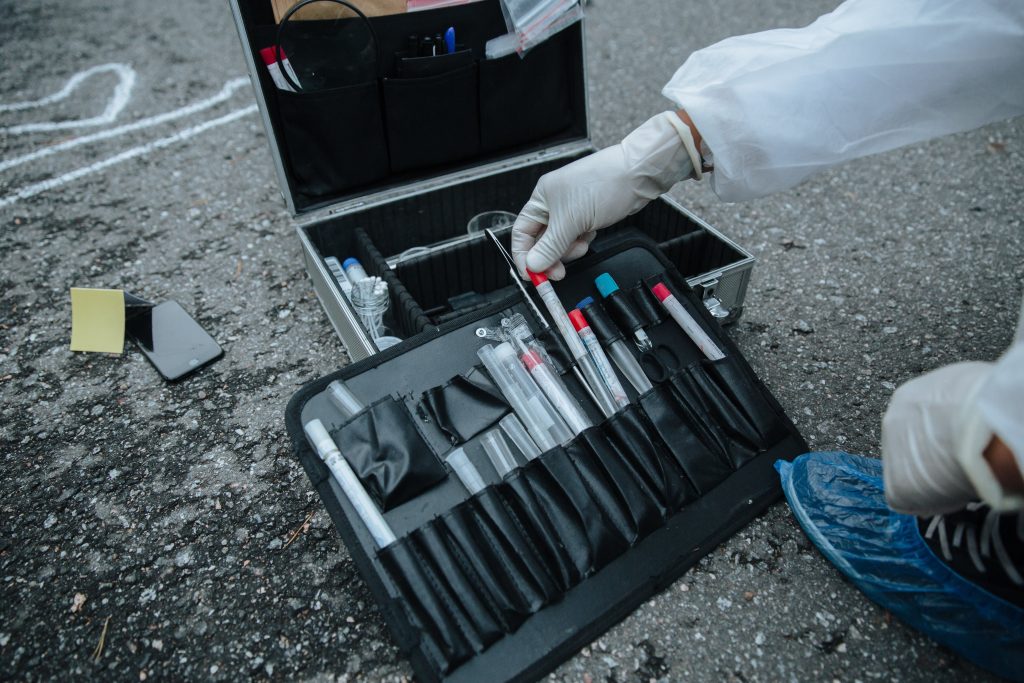Dealing with the theft of personal property is a distressing experience, made all the more challenging when it comes to filing an insurance claim without the possession of receipts. Many policyholders believe that without receipts, their chances of a successful claim are slim to none. However, the insurance claims process is not as black-and-white as it seems, especially concerning the burden of proof and the documentation required to substantiate a claim.
This blog post aims to demystify the process of filing insurance claims for stolen property, particularly when receipts are not available. We will explore the burden of proof in insurance claims, tackle the myth of mandatory receipts, and provide practical advice for documenting your ownership and navigating potential ambiguities introduced by insurance companies.
Table of contents

Understanding the Burden of Proof
Understanding the Burden of Proof
The burden of proof in insurance claims essentially refers to the policyholder’s responsibility to prove their claim is valid. However, this does not mean that policyholders are left without recourse if they lack traditional forms of proof like receipts.
- Policyholder’s Responsibilities: Typically, policyholders must demonstrate that a loss occurred and that the claimed items were owned by them at the time of the theft.
- Insurance Company’s Obligations: Insurance companies have a duty to investigate claims fairly and in good faith. They cannot dismiss a claim solely because traditional receipts are not presented.
By clarifying the roles and responsibilities on both sides of the claim, policyholders can better understand how to approach their claims process, even without receipts.

The Myth of Mandatory Receipts
The Myth of Mandatory Receipts
One of the most pervasive myths in insurance claims for stolen property is the perceived mandatory requirement for receipts. Many policyholders are under the impression that without receipts, their claims stand no chance of approval. However, this belief oversimplifies the claims process and does not account for the flexibility many insurers actually practice.
- Common Misconceptions: The idea that claims cannot be filed or processed without receipts is a misconception. While having receipts can make the claims process smoother, insurance companies typically have methods to assess and process claims even in their absence.
- Insurance Company Assessments: Insurers may use various means to evaluate claims for stolen property without receipts. This can include reference to the item’s market value, use of serial numbers, product descriptions, photographs, and other forms of proof of ownership. Insurance companies aim to establish a fair value for the claimed items based on the available evidence and the policyholder’s testimony.
Understanding that receipts, while helpful, are not the sole basis for a successful claim can empower policyholders to pursue their claims with confidence, utilizing alternative forms of documentation to substantiate their loss.

Standard Policy Language on Stolen Property Claims
Standard Policy Language on Stolen Property Claims
Insurance policies typically include language that outlines the requirements and procedures for filing claims, including those for stolen property. Understanding this language is crucial for policyholders navigating the claims process without receipts.
- Overview of Policy Language: Standard homeowners and renters insurance policies usually contain provisions detailing how to report a claim, the types of documentation required, and the insurer’s process for evaluating claims. This often includes language on “proof of loss,” which is the policyholder’s statement regarding the value and ownership of the claimed items.
- Citation of Standard Clauses: For instance, a policy might state, “The insured must provide proof of loss within a reasonable time, including documentation of the ownership and value of the stolen items.” It’s important to note that “proof of loss” does not exclusively mean receipts; it can also encompass other forms of evidence that policyholders can provide.
By familiarizing themselves with the specific language and requirements of their policy, policyholders can better understand what is expected of them when filing a claim and how to effectively compile and present alternative forms of proof of ownership and value.

Documenting Your Ownership Without Receipts
Documenting Your Ownership Without Receipts
Even in the absence of receipts, there are several ways policyholders can prove ownership and the value of stolen items. These alternative forms of documentation can be just as compelling when substantiating a claim:
- Photographs and Videos: Visual evidence of the items in your home can serve as proof of ownership. Regularly taking photos or videos of your possessions, especially those of high value, can be invaluable during the claims process.
- Manuals, Packaging, and Warranty Cards: Often overlooked, these items can serve as proof that you owned a specific model or brand of a stolen item. They can also help establish the value of the item.
- Statements from Witnesses or Affidavits: Having friends or family members who can attest to the presence and ownership of certain items in your home can support your claim. In some cases, a formal affidavit may be required.
- Bank Statements and Online Purchase Histories: Financial records that show transactions related to the purchase of the stolen items can be powerful evidence of ownership and the item’s value at the time of purchase.
Gathering and presenting these alternative forms of evidence can significantly strengthen your claim, demonstrating ownership and helping to establish the value of your stolen property

Strategies to Overcome Ambiguity in Claims Process
Strategies to Overcome Ambiguity in Claims Process
Navigating the claims process can sometimes feel like a battle against ambiguity, especially when insurance companies introduce doubts or request additional proof. Here are strategies to help policyholders communicate and document their claims more effectively:
- Maintain Clear and Organized Records: Keeping a detailed and organized record of all communications with your insurance company, including dates, names, and summaries of conversations, can help clarify misunderstandings and provide a timeline of events.
- Understand and Cite Policy Language: Familiarize yourself with your insurance policy’s language, especially clauses related to claims for stolen property. Being able to reference specific sections of your policy can strengthen your position and help counter any ambiguity introduced by the insurer.
- Prepare a Detailed Inventory: Compile a comprehensive list of stolen items, including descriptions, estimated values, and any available evidence of ownership. This inventory should be as detailed as possible to leave little room for ambiguity.
- Seek Professional Advice: Consulting with a public adjuster or legal professional can provide clarity and direction, especially when facing significant pushback from an insurance company. These experts can help interpret policy language, suggest additional forms of evidence, and advocate on your behalf.
By adopting these strategies, policyholders can navigate the claims process with greater confidence and effectiveness, reducing the impact of ambiguity and enhancing their chances of achieving a fair settlement.

Insurance Companies & Ambiguity
Insurance Companies & Ambiguity
Insurance companies may sometimes introduce ambiguity into the claims process, creating challenges for policyholders seeking to substantiate their claims. This can manifest in several ways, including vague language about the necessity of receipts or unclear criteria for proving ownership and value. Understanding these tactics is the first step in effectively countering them.
- Vague Requirements for Documentation: Insurers might suggest, either directly or indirectly, that claims cannot be processed without receipts. This insinuation can deter policyholders from pursuing valid claims due to perceived inadequate documentation.
- Shifting Standards of Proof: Some insurance companies may inconsistently apply their standards for what constitutes acceptable proof of ownership, leading to confusion and frustration for the policyholder.
How to Respond:
- Clarify Policy Language: Request specific references to policy language that outlines the documentation requirements. This can help pin down exactly what is required and counter vague or shifting standards.
- Leverage Alternative Documentation: As discussed, present alternative forms of proof such as photographs, bank statements, and witness statements. Highlight these as legitimate evidence of ownership and value in accordance with your policy’s provisions.
- Insist on Transparency: If responses from your insurance company remain ambiguous, insist on clear, written explanations. Documenting these interactions can be helpful if you need to escalate your claim or seek external assistance.

Real-Life Examples & Case Studies
Real-Life Examples & Case Studies
Examining real-life examples where policyholders have successfully navigated the claims process without receipts can offer valuable insights and strategies. These case studies not only demonstrate that it’s possible to achieve a favorable outcome under such circumstances but also highlight effective tactics employed by policyholders.
- Case Study 1: A policyholder used a combination of family photos showing the stolen items in their home, bank statements indicating purchases, and a detailed inventory list to substantiate their claim for stolen electronics. Despite initially being told receipts were necessary, the comprehensive evidence provided led to a full settlement.
- Case Study 2: After a burglary, a policyholder was able to recover the full value of stolen jewelry by presenting warranty cards, appraisal certificates, and witness statements from friends and family who had seen the jewelry in the policyholder’s possession. The insurance company initially resisted but relented when presented with the detailed documentation.
Lessons Learned:
- Documentation is Key: Even in the absence of receipts, thorough documentation and creative use of alternative proof can successfully substantiate a claim.
- Persistence Pays Off: Policyholders who stay persistent, organized, and willing to challenge ambiguity can navigate through the process more effectively.
- Knowledge is Power: Understanding your policy and rights, coupled with a strategic approach to documenting your claim, can overcome challenges introduced by insurance companies.
These examples underscore the importance of being prepared, staying informed, and creatively leveraging all available resources to substantiate your claim, even in the face of ambiguity or initial resistance from insurance companies.
Wrapping Up
Navigating a claim for stolen property without receipts can initially seem like a daunting task, fraught with uncertainties and potential roadblocks introduced by insurance companies. However, as we’ve explored, policyholders are not without recourse. Armed with a thorough understanding of the claims process, knowledge of policy language, and the ability to leverage alternative forms of documentation, you can effectively assert your rights and substantiate your claim.
The key takeaway is the importance of being proactive, organized, and persistent. By understanding the tactics that insurance companies might use to introduce ambiguity, and knowing how to counter these with well-documented evidence and a clear understanding of your policy, you can navigate these challenges successfully. Real-life examples show that it is entirely possible to achieve a favorable outcome, even in what may initially appear to be less-than-ideal circumstances.
Remember, the goal is not just to file a claim but to ensure that you are adequately compensated for your loss, in accordance with the terms of your insurance policy. With the right approach and preparation, policyholders can navigate the claims process confidently, turning potential setbacks into success stories.
FAQ
Yes, it’s possible to file a claim even without receipts. Insurance companies can use alternative forms of documentation to assess and process claims. These might include photographs, bank statements, product manuals, warranty cards, or any other evidence that can help prove ownership and estimate the value of the stolen items.
Valid alternative documentation can include photographs or videos of the items, bank statements showing purchase transactions, credit card statements, warranty cards, product manuals, appraisals, or affidavits from witnesses who can attest to the items’ presence and your ownership.
Regularly photograph your valuables and the rooms in your home to have current visual records. Save purchase receipts digitally or in a safe place. Record serial numbers and store them along with product manuals, warranty cards, and any appraisals or certifications of value for high-value items.
Request a detailed explanation for the denial and review your policy to understand the specified documentation requirements. Present any alternative documentation you have, and if necessary, consider seeking advice from a public adjuster or legal counsel to challenge the decision.
While insurance companies prefer receipts as the most straightforward proof of purchase and value, they cannot universally require them for every item, especially for older possessions or in cases where providing receipts is impractical. Policyholders should refer to their policy details and communicate with their insurer about acceptable forms of proof.
Insurance companies may use the market value, depreciation schedules, and any available documentation or descriptions of the items to estimate their value. The assessment process aims to establish a fair replacement cost or actual cash value for the stolen property based on the evidence provided.
Provide as much detail as possible about the stolen items, including descriptions, photographs, any remaining packaging or manuals, and approximate purchase dates and prices. Be proactive in compiling and presenting evidence, and maintain clear, organized records of all communications with your insurer.



